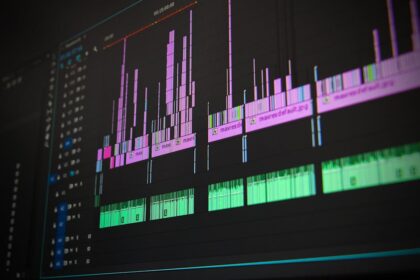Understanding Video Ad Fatigue: A Core Challenge in Modern Advertising
Video ad fatigue manifests as a pervasive and growing challenge within the digital advertising landscape, characterized by diminishing returns, reduced engagement, and a rising tide of consumer annoyance towards repetitive or irrelevant video advertisements. At its essence, fatigue sets in when an audience is overexposed to the same ad creatives, or variations thereof, leading to a state of desensitization, indifference, or outright irritation. This phenomenon isn’t merely an inconvenience; it represents a significant obstacle to effective marketing, directly impacting return on investment (ROI), brand perception, and ultimately, sales. For advertisers, the symptoms of video ad fatigue are stark: click-through rates (CTRs) plummet, conversion rates stagnate or decline, cost-per-acquisition (CPA) escalates, and negative sentiment toward the brand can begin to proliferate. Consumers, on the other hand, react by actively ignoring ads (ad blindness), skipping them whenever possible, or even employing ad-blocking software, effectively creating a barrier between brands and their intended messages. The root causes are multifaceted, stemming from aggressive frequency capping failures, broad targeting leading to irrelevant ad serving, and a lack of creative diversity that results in monotonous ad experiences. Addressing this issue requires a comprehensive strategy that spans creative development, media planning, audience targeting, and a fundamental shift towards user-centric ad experiences.
The Psychological Underpinnings of Ad Fatigue
To effectively combat video ad fatigue, it’s crucial to delve into its psychological roots. This isn’t just about ads being annoying; it’s about fundamental human cognitive processes that influence how we perceive and react to information, particularly repetitive stimuli.
Cognitive Load and Processing Fluency: Our brains have a limited capacity for processing information. When confronted with a constant barrage of similar advertisements, the cognitive load increases, leading to mental exhaustion. Initially, new information is processed with a degree of attention and novelty. However, as the information becomes familiar, processing fluency increases – we recognize it quickly, but this often leads to less conscious engagement. While some level of repetition is necessary for message retention, excessive repetition tips the scale from recognition to boredom. The brain seeks novelty and efficiency; repetitive ads fail to provide either after a certain point.
Habituation and Desensitization: One of the primary psychological mechanisms at play is habituation. This is a basic form of learning where an organism decreases its response to a stimulus after repeated presentations. Initially, an ad might grab attention, but after seeing it multiple times, the brain learns that the stimulus is not new or particularly important, and thus reduces its response. This leads to desensitization, where the emotional or cognitive impact of the ad diminishes significantly. What was once engaging becomes background noise, or worse, an irritant. Think of a persistent background hum – initially noticeable, but eventually filtered out by the brain. Ads can suffer the same fate.
Reactance Theory: When individuals perceive their freedom or autonomy being threatened, they often experience a psychological phenomenon known as reactance. In the context of advertising, overly intrusive, repetitive, or unavoidable ads can make consumers feel as though their control over their online experience is being diminished. This perceived threat can lead to negative emotional states, resistance to the message, and a desire to reassert control – often by skipping ads, using ad blockers, or developing negative brand associations. The “forced viewing” aspect of many video ads, particularly pre-roll, can trigger this reactance, turning a potential customer into an antagonist.
Attention Economy and Selective Attention: In today’s hyper-connected world, we are constantly bombarded with information. This scarcity of attention has led to what is termed the “attention economy.” Consumers are highly selective about what they choose to focus on. Video ads compete not just with other ads, but with the primary content the user wishes to consume, personal notifications, and a myriad of other digital distractions. When an ad fails to immediately capture and sustain attention, or worse, actively detracts from the desired experience, it is quickly filtered out by selective attention. Repetitive ads quickly lose their ability to break through this filter, becoming part of the ignored background noise.
Impact of Emotional Valence: Emotions play a critical role in memory and decision-making. Ads that evoke positive emotions (humor, inspiration, joy) are more likely to be remembered favorably and acted upon. Conversely, ads that provoke negative emotions (annoyance, frustration, anger) due to their intrusiveness or repetition can lead to strong negative associations with the brand. This negative emotional valence not only deters immediate action but can also damage long-term brand perception and loyalty. The cumulative effect of irritating ads can erode goodwill built up through other marketing efforts.
Strategic Pillars for Combating Video Ad Fatigue
Overcoming video ad fatigue requires a multi-faceted approach, integrating creative excellence, data-driven targeting, and thoughtful user experience design. These strategic pillars work in concert to deliver more engaging, relevant, and timely advertising.
Pillar 1: Creative Innovation and Diversity
At the heart of combating ad fatigue lies the imperative for continuous creative innovation. Static, one-size-fits-all video ads are a relic of the past; today’s dynamic digital landscape demands adaptability and artistic prowess.
Storytelling Excellence: Moving beyond product features to compelling narratives is paramount. People remember stories, not just sales pitches. A well-crafted video ad tells a story with a beginning, middle, and end, featuring characters (even abstract ones) that viewers can relate to, and an emotional arc. This could be a mini-documentary about a brand’s impact, a relatable slice-of-life scenario, or a humorous take on a common problem. Authenticity in storytelling resonates deeply, building a genuine connection rather than just pushing a product. For example, a brand could create a series of short, interconnected video ads that slowly reveal a larger narrative, encouraging viewers to anticipate the next installment.
Format Diversification: Relying solely on the standard 15 or 30-second pre-roll is a recipe for fatigue. Modern advertisers must embrace a diverse palette of video formats. Shoppable video integrates purchase links directly into the ad, reducing friction. Interactive video, with clickable elements or branching narratives, empowers viewers to control their experience, increasing engagement. Vertical video is crucial for mobile-first platforms like TikTok and Instagram Stories, aligning with how users naturally hold their phones. 360-degree video offers immersive experiences, while augmented reality (AR) filters on social media platforms turn ads into playful, shareable experiences. The key is to match the format to the platform and the user’s context.
Dynamic Creative Optimization (DCO): DCO is a game-changer for personalization at scale. Instead of pre-producing hundreds of unique ads, DCO platforms use a single ad template and dynamically insert elements (product images, headlines, calls-to-action, pricing, background music) based on real-time user data. This data can include browsing history, demographics, location, weather, time of day, and even the content they are currently viewing. For instance, an e-commerce brand can show a user an ad featuring the exact product they abandoned in their cart, combined with a personalized discount code, and localized shipping information. DCO allows for hundreds or thousands of unique ad variations, preventing the repetitive exposure that causes fatigue while simultaneously increasing relevance. It also facilitates rapid A/B testing of various creative elements to continuously optimize performance.
Humor and Surprise: The unexpected can break through the clutter. Humor, when executed well, is highly memorable and shareable, fostering positive brand association. Surprise elements, such as a clever twist or an unusual visual, can re-engage viewers who might otherwise scroll past. This requires a deep understanding of the target audience’s sensibilities and cultural context to ensure the humor lands effectively and avoids alienating viewers.
Authenticity and User-Generated Content (UGC): Consumers increasingly distrust polished, overly produced advertisements. Authenticity, often found in user-generated content (UGC), resonates strongly. Incorporating real customer testimonials, unboxing videos, or creative ways users interact with a product can build trust and relatability. UGC acts as social proof and provides a seemingly endless stream of diverse creative assets that can prevent fatigue. Brands can actively solicit and curate UGC or use social listening tools to identify relevant content.
Problem-Solution Frameworks: Ads that empathize with a viewer’s pain point and then present the product as a clear, effective solution are highly persuasive. This approach requires understanding the audience’s challenges and framing the product as a valuable aid, rather than just another item to buy. Empathy in advertising builds connection and relevance.
Sound Design and Music: Often overlooked, audio is a powerful component of video advertising. A unique sound logo, a memorable jingle, or carefully selected background music can set the mood, enhance emotional impact, and significantly contribute to brand recall. Varying the audio elements in different ad iterations can also help prevent auditory fatigue, especially if a specific jingle is catchy but prone to becoming annoying with overexposure.
Accessibility: Ensuring video ads are accessible to all audiences, including those with disabilities, is not just ethical but also enhances reach. Captions for the hearing impaired, audio descriptions for the visually impaired, and clear, contrasting visuals ensure the message can be consumed by a wider audience, reducing frustration and improving inclusivity.
Pillar 2: Precision Targeting and Audience Understanding
Broadcasting to everyone is broadcasting to no one, and it’s a fast track to ad fatigue. Precision targeting ensures that video ads are seen by those most likely to find them relevant, minimizing wasted impressions and maximizing positive reception.
Granular Segmentation: Beyond basic demographics, effective targeting delves into psychographics (values, attitudes, lifestyles), behaviors (online activities, purchase history), intent (search queries, content consumption), and life stages. A brand selling baby products might target new parents, but further segmenting by age of child, feeding preferences, or specific product needs (e.g., organic only) can dramatically increase relevance and reduce fatigue from generic baby product ads.
First-Party Data Leverage: The most valuable data an advertiser possesses is its own first-party data – information collected directly from customers via CRM systems, website interactions, purchase history, and app usage. This data is gold for creating highly personalized ad experiences. Data clean rooms allow brands to securely collaborate with partners to enrich their data without compromising privacy, enabling more sophisticated segmentation. Leveraging this data to identify high-intent segments or lapsed customers allows for tailored messaging that feels less like a random ad and more like a helpful suggestion.
Lookalike Audiences: Once high-value customer segments are identified from first-party data, lookalike audiences allow advertisers to expand their reach by finding new users who share similar characteristics and behaviors with their existing customers. This intelligent expansion helps in discovering new potential customers who are predisposed to find the brand relevant, thus mitigating the risk of serving ads to uninterested parties.
Contextual Targeting: Serving ads that are contextually relevant to the content being consumed by the user can significantly enhance acceptance. An ad for hiking gear shown alongside a video about national parks feels natural and unobtrusive, unlike the same ad appearing during a makeup tutorial. Contextual targeting uses keywords, categories, and sentiment analysis of web pages or videos to ensure brand safety and relevance, making the ad feel like an organic part of the viewing experience.
Geo-Targeting and Hyper-Localization: Tailoring ad content to specific geographic regions or even hyper-local communities adds an immediate layer of relevance. This can include using local landmarks, addressing local events, or referencing regional dialects. A restaurant chain, for instance, can showcase a dish popular in a specific city or highlight a local promotional event, making the ad highly pertinent to the viewer’s immediate environment.
Cross-Device Identification: Consumers interact with brands across multiple devices (smartphone, tablet, desktop, smart TV). Effective cross-device identification allows advertisers to create a unified view of the user journey, ensuring a consistent and sequential ad experience regardless of the device. This prevents the frustration of seeing the same ad repeatedly on different devices, improving the overall user experience and preventing duplicate impressions.
Predictive Analytics: Utilizing AI and machine learning, predictive analytics can forecast future audience needs, behaviors, and purchase probabilities. By anticipating what a user might want or need before they explicitly search for it, advertisers can deliver highly proactive and relevant video ads, moving beyond reactive targeting and pre-empting fatigue by showing the right ad at the right moment.
Pillar 3: Intelligent Frequency Management
Overexposure is arguably the leading cause of video ad fatigue. Intelligent frequency management is about finding the “Goldilocks Zone” – the optimal number of times a user should see an ad for it to be effective without becoming annoying.
The “Goldilocks Zone”: This ideal frequency varies by industry, campaign objective, ad creative, and audience segment. Too few impressions, and the message won’t land; too many, and fatigue sets in. Advanced analytics are crucial to identify this sweet spot, which often lies between 3-7 impressions per user per week for many campaigns, but can vary widely. Continual monitoring of key metrics (CTR, engagement rate, conversion rate, skip rate) in relation to frequency is essential.
Platform-Specific Frequencies: Different ad platforms have different ecosystem behaviors and user tolerances for ads. What might be acceptable frequency on YouTube, where users are accustomed to pre-rolls, might be excessive on TikTok, where short, rapid-fire content reigns. Advertisers must understand the native ad experiences and user expectations of each platform to set appropriate frequency caps. Meta (Facebook/Instagram), Google Ads (YouTube, GDN), and TikTok all offer distinct controls and require tailored strategies.
Pacing Strategies: Ad delivery can be paced in different ways:
- Standard Pacing: Distributes impressions evenly over the campaign duration.
- Accelerated Pacing: Delivers impressions as quickly as possible, useful for time-sensitive promotions but risky for fatigue.
- Even Pacing: Aims for a steady rate, helping to maintain awareness without overwhelming the audience.
Choosing the right pacing strategy depends on campaign goals and the risk of fatigue.
Impression Capping vs. Reach Optimization: While impression capping limits the number of times an ad is shown to a single user, reach optimization prioritizes showing the ad to as many unique users as possible within a target audience. For brand awareness campaigns, reach optimization is often preferred to prevent fatigue. For direct response, a higher impression cap might be tested to ensure the message sinks in, but with caution.
Sequential Storytelling: Instead of showing the same ad repeatedly, advertisers can employ sequential storytelling. This involves delivering a series of different video ads to the same user, with each ad building upon the last to reveal more of the brand’s story, product features, or customer benefits. This approach keeps the content fresh, maintains user interest, and guides the user through the marketing funnel in a more natural, engaging way. For instance, Ad 1 might introduce a problem, Ad 2 shows the solution (the product), and Ad 3 provides a call to action or a testimonial.
Exclusion Lists: Regularly updating exclusion lists is critical. Users who have already converted (e.g., made a purchase, signed up for a newsletter) should ideally be removed from direct response ad campaigns to prevent irrelevant exposure and wasted spend. Similarly, users who exhibit negative engagement (e.g., consistently skipping ads at the first opportunity, negative comments) could be considered for exclusion or shifted to different ad creatives.
Decay Models: Understanding how ad effectiveness decays over time is crucial for optimizing frequency. Research suggests that the effectiveness of an ad often follows an S-curve: initial exposure has low impact, then effectiveness peaks, and then declines rapidly as fatigue sets in. Predictive models can help estimate this decay curve for different ad creatives and audience segments, informing when to rotate creatives or adjust frequency caps.
Pillar 4: User Experience (UX) and Placement Strategy
The context and manner in which a video ad is delivered profoundly impact its reception. A strong focus on user experience minimizes intrusiveness and maximizes relevance.
Contextual Relevance: As discussed under targeting, ads that are contextually relevant to the surrounding content are perceived as less intrusive and more helpful. This means placing ads within videos, articles, or apps where the content aligns with the product or service being advertised. For example, an ad for a new recipe app shown during a cooking show feels far less disruptive than during a sports broadcast.
Non-Interruptive Formats: While pre-roll video ads are common, they are also highly interruptive. Exploring non-interruptive formats can significantly reduce fatigue. Out-stream video ads appear within text content on a web page and only play when in view, often pausing when scrolled away. Native video ads blend seamlessly into the platform’s content feed, matching the look and feel of organic posts. Rewarded video ads are opt-in, offering users an incentive (e.g., in-game currency, premium content access) for watching an ad; this voluntary engagement leads to higher acceptance and completion rates.
Respecting User Journey: Understanding where the user is in their customer journey allows for more empathetic and effective ad placement. An awareness-stage ad might be suitable for an in-stream placement, while a decision-stage ad (e.g., a demo video) might be better served after a user has specifically sought out product information. Irrelevant ads at critical moments of the journey can be highly irritating.
Mobile-First Design: With the majority of internet users accessing content via mobile devices, video ads must be optimized for mobile screens. This includes designing for vertical video, ensuring clear visuals on smaller screens, and optimizing for touch interactions (e.g., tap-to-expand, swipeable elements). Slow loading mobile ads or those not optimized for vertical viewing significantly contribute to a poor user experience.
Loading Speed Optimization: In an age of instant gratification, slow-loading video ads are a major source of frustration and contribute to high bounce rates. Optimizing video file sizes, leveraging content delivery networks (CDNs), and pre-loading ad assets ensure smooth, instant playback, respecting the user’s time and attention.
Transparency and Control: Providing users with transparency about why they are seeing an ad (e.g., “Why am I seeing this ad?” options) and offering clear control mechanisms (e.g., easy-to-find skip buttons, options to report irrelevant ads) can significantly improve user perception. Even if a user skips an ad, the feeling of control can mitigate frustration and prevent negative brand sentiment.
Avoiding Overload: Beyond individual ad frequency, the overall ad density on a platform or within a content experience matters. Too many ads, even if varied, can overwhelm the user. Publishers and advertisers need to collaborate to ensure a balanced ad-to-content ratio that prioritizes user experience over short-term revenue maximization.
Pillar 5: Measurement, Testing, and Iteration
Data-driven decision-making is critical to combating video ad fatigue. This involves moving beyond vanity metrics and establishing robust testing methodologies to continuously refine campaigns.
Beyond Clicks: While clicks and conversions are important, they don’t tell the whole story, especially when it comes to brand health and long-term impact. Key metrics to monitor for ad fatigue include:
- Brand Lift Studies: Measure changes in brand awareness, ad recall, message association, brand favorability, and purchase intent after exposure to ads.
- View-Through Conversions (VTCs): Track conversions from users who saw an ad but didn’t click, demonstrating the ad’s influence.
- Sentiment Analysis: Monitor social media conversations and ad comments for sentiment (positive, neutral, negative) related to the ads.
- Qualitative Feedback: Conduct surveys, focus groups, and user interviews to gather direct insights into ad perception.
- Skip Rates: High skip rates (especially within the first few seconds) are a clear indicator of fatigue or irrelevance.
- Video Completion Rates (VCR): Low VCR, particularly for shorter ads, suggests a lack of engagement.
- Cost-per-View (CPV) and eCPM (effective cost per mille): Increasing CPV or eCPM for the same reach can indicate declining efficiency due to fatigue.
A/B Testing Methodologies: Continuous A/B testing is essential for identifying what works and what doesn’t. This includes testing:
- Creative Elements: Different headlines, calls-to-action (CTAs), visuals, voiceovers, music, and opening hooks.
- Ad Lengths: Short-form (6-15 seconds), mid-form (30 seconds), long-form (1 minute+).
- Targeting Parameters: Different audience segments, lookalikes, contextual placements.
- Frequency Caps: Experimenting with various impression limits to find the optimal “Goldilocks Zone.”
- Ad Formats: Pre-roll vs. mid-roll, in-stream vs. out-stream, interactive vs. linear.
Multivariate testing can be used to test multiple variables simultaneously, though it requires larger sample sizes and more sophisticated tools.
Audience Response Monitoring: Closely monitoring real-time audience responses to video ads provides immediate insights. High engagement rates (likes, shares, comments) suggest positive reception, while an influx of negative comments or a surge in skip rates signals potential fatigue or creative issues. AI-powered sentiment analysis tools can help process large volumes of comments efficiently.
Attribution Models: Understanding the various touchpoints across the customer journey helps in attributing value to different ad exposures. Multi-touch attribution models (e.g., linear, time decay, position-based) provide a more holistic view than last-click attribution, revealing how video ads contribute to conversions, even if not directly clicked. This helps justify continued investment in branding efforts that might not yield immediate clicks but prevent fatigue.
Feedback Loops: Establish systematic feedback loops where insights from measurement and testing are fed back into the creative and media planning teams. This agile approach allows for rapid iteration and adaptation of campaigns based on real-world performance data and user sentiment. This continuous cycle of test-learn-adapt is the antidote to static, fatigue-inducing campaigns.
Dashboards and Reporting: Develop clear, intuitive dashboards that visualize key performance metrics related to ad fatigue. These should track frequency distribution across audiences, reach/frequency curves, and the correlation between frequency and declining engagement/conversion rates. This enables quick identification of fatigue hotspots and proactive adjustments.
Pillar 6: Ethical Considerations and Brand Building
Beyond the technical aspects, a deeper commitment to ethical advertising practices and long-term brand building is crucial in the fight against ad fatigue.
Privacy-Centric Approaches: With increasing consumer awareness and regulatory scrutiny (GDPR, CCPA, etc.), a privacy-first approach is non-negotiable. Advertisers must be transparent about data collection and usage, respect user consent, and avoid intrusive tracking practices. Privacy-centric advertising builds trust, which in turn reduces reactance and improves ad reception. This includes exploring privacy-enhancing technologies like federated learning and differential privacy.
Opt-in Strategies: Wherever possible, offering users an opt-in for personalized ads can significantly increase acceptance rates. When personalization is perceived as a benefit (e.g., “See more relevant offers”) rather than an invasion of privacy, users are more receptive. Rewarded video is a prime example of an opt-in strategy.
Ad Blockers and Their Implications: The rise of ad blockers is a direct consequence of ad fatigue and intrusive advertising. Understanding why users install ad blockers (overload, irrelevance, privacy concerns, slow loading times) provides valuable insights. Rather than fighting ad blockers, advertisers should focus on creating experiences so valuable and non-intrusive that users feel no need for them, or even choose to whitelist certain sites.
Long-Term Brand Equity: While direct response campaigns aim for immediate conversions, sustained brand building is essential for long-term success and fatigue prevention. Brand-building video ads focus on storytelling, emotional connection, and communicating brand values rather than just product features. These ads aim to increase brand awareness, recall, and favorability, which can make future direct response ads more effective and less prone to fatigue because they are associated with a trusted, familiar brand. A strong brand connection can make even a slightly repetitive ad more tolerable.
Transparency and Authenticity: Be clear about what an ad is and who it’s from. Authenticity in messaging and brand voice builds trust. Misleading ad practices or deceptive creatives only fuel user frustration and accelerate fatigue. Honesty fosters a sense of respect between the brand and the consumer.
CSR (Corporate Social Responsibility) in Ads: Consumers increasingly value brands that align with their values and contribute positively to society. Video ads showcasing a brand’s corporate social responsibility initiatives, sustainability efforts, or support for social causes can build strong emotional connections and differentiate the brand, making ads feel more meaningful and less like pure commercial interruptions. This adds a layer of purpose that can counteract the negative feelings of fatigue.
The Role of Emerging Technologies
Emerging technologies are not just buzzwords; they offer powerful new tools to combat video ad fatigue by enabling greater personalization, immersion, and efficiency.
Artificial Intelligence (AI): AI is at the forefront of the fight against ad fatigue.
- Predictive Analytics for Targeting: AI algorithms can analyze vast datasets to predict user behavior and identify the optimal time and context to serve an ad, minimizing wasted impressions and maximizing relevance.
- Automated Creative Generation: AI can assist in generating multiple ad creative variations quickly, including different headlines, voiceovers, or even entire video sequences, based on performance data. This rapid diversification is key to preventing fatigue.
- Sentiment Analysis: AI-powered tools can monitor and analyze real-time user comments and feedback across platforms to gauge sentiment towards ads, providing immediate alerts to fatigue symptoms.
- DCO Optimization: AI continuously optimizes DCO elements, learning which combinations of creative assets, messaging, and targeting parameters perform best for specific audience segments, ensuring maximum relevance and reducing repetition.
Machine Learning (ML): As a subset of AI, ML algorithms are crucial for:
- Identifying Patterns of Fatigue: ML models can detect subtle patterns in user behavior (e.g., increasing skip rates after X impressions, declining CTRs after Y days) that indicate fatigue is setting in.
- Optimizing Delivery Algorithms: ML continuously refines ad delivery algorithms to balance reach, frequency, and relevance, learning from past campaign performance to improve future ad placements and timing.
- Personalized Recommendation Engines: Similar to streaming services, ML can power ad recommendation engines that suggest highly relevant products or content, making ads feel like personalized suggestions rather than intrusions.
Virtual Reality (VR) and Augmented Reality (AR): These immersive technologies offer new frontiers for less intrusive, more engaging ad experiences.
- VR Experiences: Brands can create branded VR experiences that users opt into, such as virtual showrooms or interactive storytelling environments. These are inherently non-fatiguing because they are user-initiated and provide high perceived value.
- AR Filters and Lenses: On social platforms, AR filters allow users to interact with branded content, try on virtual products, or transform their environment. These are playful, shareable, and contextually relevant, turning advertising into an interactive experience rather than a passive viewing one.
- Interactive Product Placements: In the future, AR could enable dynamic, interactive product placements within entertainment content, where users could tap to learn more about an item they see on screen without interrupting the primary content flow.
Programmatic Advertising Evolution: Programmatic advertising, driven by AI and ML, continues to evolve to combat fatigue.
- AI-driven Bidding: Optimizes bids in real-time based on predicted likelihood of conversion and fatigue levels, ensuring efficient spend.
- Advanced Contextual Placement: More sophisticated contextual engines that understand not just keywords but also the sentiment and nuance of content, ensuring truly relevant ad placements.
- Fraud Detection: AI helps combat ad fraud, ensuring that impressions are real and seen by human audiences, preventing wasted spend on fraudulent traffic that can distort frequency metrics.
Organizational Alignment and Process
Technology and creative brilliance alone are not enough. Overcoming video ad fatigue requires a fundamental shift in organizational culture and process, fostering collaboration and agility.
Cross-Functional Collaboration: Ad fatigue is not solely a creative problem or a media buying problem; it’s a holistic marketing challenge. Effective solutions require seamless collaboration between:
- Creative Teams: Responsible for developing engaging, diverse, and relevant ad content.
- Media Buying/Planning Teams: Responsible for setting accurate frequency caps, pacing, and optimizing placements.
- Data Science/Analytics Teams: Providing the insights into audience behavior, fatigue thresholds, and campaign performance.
- User Experience (UX) Teams: Advocating for the user, ensuring ads enhance rather than detract from the overall experience.
- Product Teams: Ensuring the ad experience aligns with the overall product strategy and customer journey.
Siloed departments will inevitably lead to disjointed, fatigue-inducing campaigns.
Agile Marketing Principles: The advertising landscape changes rapidly, and what works today might cause fatigue tomorrow. Adopting agile marketing principles – iterative development, rapid testing, continuous learning, and quick adaptation – is crucial. This means:
- Short Sprints: Running campaigns in shorter cycles, allowing for frequent analysis and adjustment.
- Minimum Viable Campaigns: Launching with a core set of creatives and targeting, then expanding and refining based on early performance.
- Regular Stand-ups/Check-ins: Ensuring all relevant teams are aligned and share insights frequently.
- Embracing Failure as Learning: Not every test will succeed, but every test provides valuable data.
Investing in Talent and Tools: To execute these strategies, organizations need to invest in the right talent and technology:
- Data Scientists: To build predictive models, analyze complex datasets, and derive actionable insights.
- Creative Technologists: To bridge the gap between creative vision and technological execution, especially for DCO, interactive video, and AR/VR experiences.
- Ad Tech Platforms: Investing in advanced ad serving platforms, DCO tools, and analytics suites that offer granular control over frequency, targeting, and provide robust reporting capabilities.
- User Researchers: To gather qualitative feedback directly from consumers about their ad experiences.
Setting Realistic KPIs: Finally, organizations must set realistic Key Performance Indicators (KPIs) that extend beyond immediate clicks and conversions. While sales are vital, KPIs should also include metrics related to brand health (awareness, recall, favorability), user satisfaction (skip rates, sentiment), and long-term customer lifetime value. Balancing immediate revenue goals with the imperative to build a positive, fatigue-resistant brand experience is paramount for sustainable growth. A focus on “effective reach” rather than just “reach” or “impressions” is a critical mindset shift.











